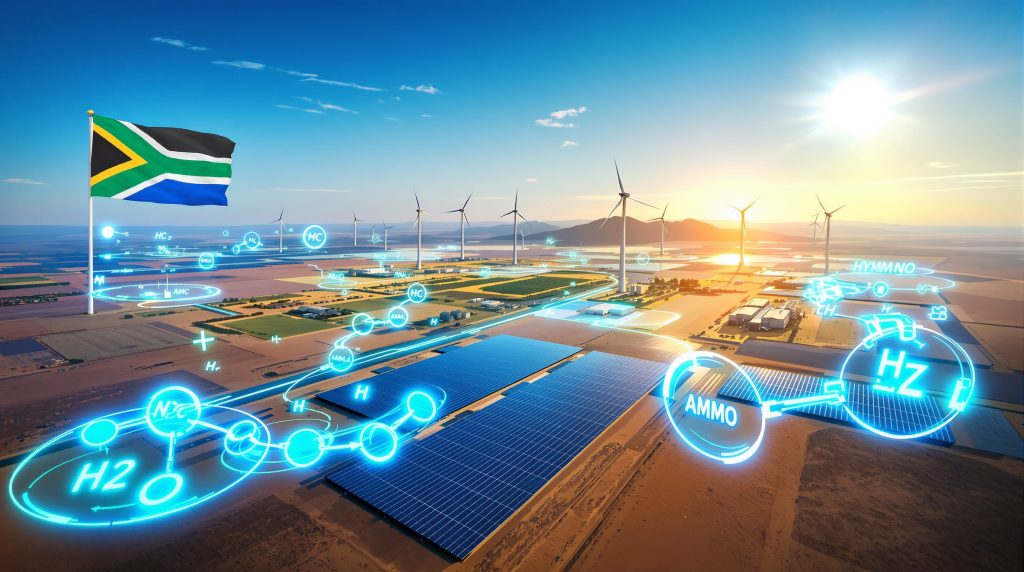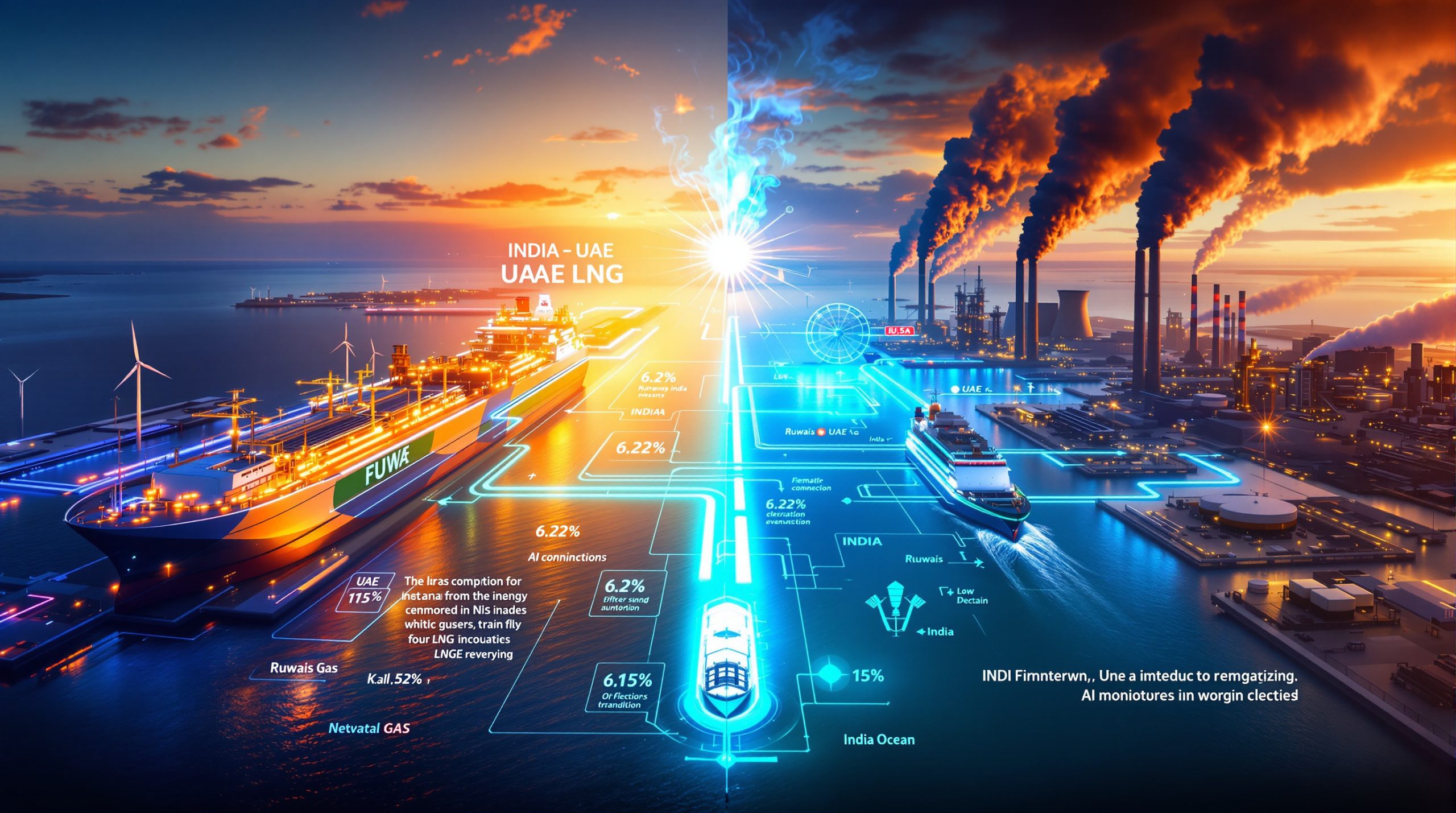The Prieska Power Reserve Project: Pioneering South Africa's Green Hydrogen Revolution
The Northern Cape province of South Africa is emerging as a critical hub for green hydrogen development, with the Prieska Power Reserve Project leading the way. This ambitious initiative represents one of the country's most significant steps toward establishing a sustainable energy future while creating economic opportunities in the renewable sector. Furthermore, this project aligns with global energy transition strategies that aim to reduce carbon emissions and promote renewable energy sources.
What is the Prieska Power Reserve Project?
The Prieska Power Reserve Project stands as one of South Africa's most ambitious green hydrogen initiatives, strategically located near the town of Prieska in the Northern Cape province. This groundbreaking venture aims to produce 80,000 tonnes of green ammonia annually, which includes approximately 14,500 tonnes of green hydrogen content.
The project exemplifies South Africa's commitment to inclusive economic growth alongside environmental sustainability through its ownership structure. It is jointly owned by Mahlako, a women-owned empowerment consortium, and Cenec, a Bloemfontein-based emission energy company that specializes in designing and managing solar and wind energy plants.
Technical Specifications and Infrastructure
The Prieska project features a comprehensive technical setup designed for maximum efficiency and sustainability:
- 120 MW electrolyser dedicated to hydrogen production
- 180 MWp solar photovoltaic installation
- 136 MWp wind power capacity
- 45 MW battery storage system enabling continuous 24-hour operation
This integrated renewable energy system will span approximately 1,900 hectares of privately owned farms outside Prieska. While the renewable energy generation sites are positioned outside the town, the chemical processing facilities for green ammonia production will be situated within Prieska's industrial area on land owned by the Siyathemba local municipality.
How is the Project Being Financed?
The Prieska Power Reserve Project has secured significant financial backing from both domestic and international institutions, demonstrating strong confidence in South Africa's green hydrogen potential.
Key Financial Partners
The Industrial Development Corporation (IDC), South Africa's state-owned development finance institution established in 1940 through an Act of Parliament, has approved development funding for the project. This investment aligns with the IDC's mandate to promote economic growth and industrial development in South Africa.
International funding support comes from Germany's Kreditanstalt für Wiederaufbau (KfW), a development bank established in 1948 after World War II. KfW's involvement underscores the global significance of the project and strengthens the growing economic ties between South Africa and Germany in the renewable energy sector.
While specific financial terms and funding amounts have not been publicly disclosed, this combination of domestic and international financial backing provides a solid foundation for the project's development and implementation.
Why is the Northern Cape Ideal for Green Hydrogen Production?
The Northern Cape province offers exceptional natural advantages that make it an ideal location for green hydrogen production, positioning South Africa as a potential global leader in this emerging industry.
Abundant Renewable Resources
The province boasts some of the world's best solar irradiation levels and consistent wind patterns, providing the perfect combination of renewable energy sources needed for green hydrogen production. These natural conditions enable:
- High capacity factors for both solar and wind installations
- Complementary generation profiles (solar during day, wind often stronger at night)
- Reduced need for energy storage compared to less resource-rich locations
- Cost-effective renewable electricity generation, critical for competitive hydrogen production
Strategic Geographic Position
The Northern Cape's geographic advantages extend beyond its renewable resources:
- Proximity to the Orange River for water resources (after appropriate treatment)
- Availability of large, sparsely populated land areas for renewable energy installations
- Existing industrial infrastructure that can be leveraged for new development
- Strategic positioning for potential export markets
What is South Africa's Broader Green Hydrogen Strategy?
The Prieska project represents just one component of South Africa's comprehensive strategy to become a major player in the global green metals leadership economy, with the Northern Cape serving as the epicenter of these efforts.
National Hydrogen Society Roadmap
South Africa has developed a National Hydrogen Society Roadmap that outlines the country's vision for integrating hydrogen into its energy system and economy. Key elements include:
- Establishing green hydrogen production hubs in strategic locations
- Developing domestic applications for green hydrogen and its derivatives
- Creating export pathways to international markets, particularly in Europe and Asia
- Building the necessary skills and manufacturing capabilities within South Africa
Northern Cape Green Hydrogen Strategy
The provincial government has developed a dedicated Northern Cape Green Hydrogen Strategy with ambitious targets:
- 5 GW of electrolyser capacity with 10 GW of renewable energy under construction by 2025-2026
- Positioning the province as a global green hydrogen export hub
- Supporting South Africa's broader decarbonization goals
- Long-term target of up to 40 GW electrolyser capacity by 2050
Boegoebaai Port and Green Hydrogen Special Economic Zone
A critical infrastructure component of South Africa's hydrogen strategy is the planned development of:
- A new deep-water port at Boegoebaai on the northwestern coast
- An adjacent Green Hydrogen Special Economic Zone (SEZ)
- Partnership with Sasol and other companies for development
- Export facilities specifically designed for green hydrogen and derivatives
How Will Green Hydrogen Impact South Africa's Economy?
The development of a green hydrogen industry in South Africa, particularly in the Northern Cape, promises significant economic benefits beyond environmental sustainability.
Job Creation and Skills Development
The green hydrogen sector is expected to generate substantial employment opportunities:
- 400 jobs at the Prieska project alone upon reaching commercial stage
- Thousands more jobs across the broader hydrogen value chain
- Skills development in advanced manufacturing, renewable energy, and chemical processing
- Opportunities for educational institutions to develop specialized training programs
Industrial Decarbonization
Green hydrogen will play a crucial role in helping South Africa's industrial sector reduce its carbon footprint:
- Replacing coal and natural gas in industrial processes
- Enabling green steel production
- Supporting the petrochemical industry's transition
- Providing sustainable fuel for mining operations
Export Opportunities
South Africa is strategically positioning itself to become a major exporter of green hydrogen and its derivatives:
- Agreements with international partners, including the Port of Rotterdam
- Focus on green ammonia as a hydrogen carrier for efficient transport
- Potential to supply European markets seeking to reduce dependence on fossil fuels
- Diversification of South Africa's export economy beyond traditional mining products
What Other Green Hydrogen Projects Are Underway in South Africa?
The Prieska Power Reserve Project is part of a growing ecosystem of green hydrogen initiatives across South Africa, with several other significant projects in various stages of development.
Hive Green Ammonia Export Project
Located at Nelson Mandela Bay in the Eastern Cape, this project aims to produce green ammonia primarily for export markets, leveraging the existing port infrastructure.
Keren Energy Green Development
This project near Vanrhynsdorp in the Western Cape has completed its front-end engineering design (FEED) study and bankable financial model, with most permits already secured. Key details include:
- Production target of approximately 800 tonnes of green hydrogen annually in the first phase
- Total investment requirement of around R1 billion
- Anticipated production start in the first half of 2028
- Long-term lease already secured for the project site
According to Keren Energy CEO George van Rensburg, the project team aims to reach financial close by the end of this year.
East London Industrial Development Zone Project
Green Hydrogen Solutions (GHS), through its project company GHS Green Hydrogen ELIDZ, is developing a fully integrated green hydrogen project at the East London Industrial Development Zone in the Eastern Cape. Distinctive features include:
- Closed-loop system design
- Desalination of seawater for electrolysis
- 10 MW electrolyser powered by renewable energy
- Infrastructure for compression, storage, and delivery to identified offtakers
Isondo Precious Metals Manufacturing Facility
A related project in Gauteng focuses on fuel cell and electrolyser component manufacturing, highlighting the potential for South Africa to participate in the hydrogen technology manufacturing value chain, not just in hydrogen production.
What Role Do Platinum Group Metals Play in Green Hydrogen?
South Africa, as the world's largest producer of platinum group metals (PGMs), stands to benefit significantly from the growing green hydrogen economy due to the critical role these metals play in hydrogen technologies.
PGMs in Electrolysers and Fuel Cells
Platinum group metals, particularly platinum and iridium, serve as essential catalysts in key hydrogen technologies:
- Proton Exchange Membrane (PEM) electrolysers use platinum and iridium catalysts to split water into hydrogen and oxygen
- PEM fuel cells use platinum catalysts to convert hydrogen back into electricity
- These technologies enable the efficient production, storage, and utilization of green hydrogen
Technology Recognition and Adoption
The importance of PGM-based technologies is increasingly recognized globally:
- US-based Ohmium International has highlighted the economic transformation potential of their Lotus Mark 3 PEM electrolyser system
- Plug Power, a Nasdaq-listed company, has built the US's largest liquid green hydrogen plant (15 tonnes per day) using 40 MW of platinum and iridium-catalysed electrolysers
- Major companies like Walmart and Amazon are already using PEM technology to power over 80,000 forklift trucks across 250 hydrogen fueling stations
- These companies report moving 8-10% more pallets per hour using this technology
South Africa's Strategic Advantage
While specific technologies for the Prieska project have not been publicly disclosed, South Africa's position as the world's primary PGM producer creates natural synergies:
- Potential for domestic manufacturing of PGM-containing components
- Opportunity to capture more value from PGM resources beyond raw material export
- Strategic alignment between the country's mineral resources and renewable energy ambitions
What Are the Transportation and Storage Solutions for Green Hydrogen?
Efficient transportation and storage are critical challenges for the hydrogen economy, with several innovative solutions being developed and implemented.
Liquid Organic Hydrogen Carriers (LOHC)
One promising technology with South African connections is Liquid Organic Hydrogen Carrier (LOHC) technology, being developed by the German company Hydrogenious:
- LOHC provides an "oily skin" for green hydrogen, allowing it to be transported and stored like conventional liquid fuels
- Existing infrastructure for oil and gas (ships, tanks, trucks) can be repurposed for hydrogen
- This technology significantly reduces the costs and complexities of hydrogen transport
Green Ammonia as a Hydrogen Carrier
The Prieska project's focus on green ammonia production highlights another important hydrogen carrier:
- Ammonia is easier to liquefy and transport than pure hydrogen
- Existing global infrastructure for ammonia can be leveraged
- Ammonia can be used directly in some applications or reconverted to hydrogen at destination
Direct Applications
Beyond export, green hydrogen and its derivatives have numerous direct applications:
- Mobility solutions, including fuel cell vehicles
- Sustainable aviation fuel production
- Marine bunker fuel for shipping
- Industrial feedstock for chemical production
As Engineering Centre of Excellence head Tauqeer Ahmed notes: "Africa's green hydrogen journey has just begun. By fostering collaboration between government entities, universities, and the private sector, we can unlock the immense potential of this clean energy source. Imagine a future where African ports become green hydrogen hubs, powering ships and industries with clean fuel."
What Are the Future Prospects for Green Hydrogen in South Africa?
The green hydrogen sector in South Africa shows tremendous promise for growth and development, with several factors driving its future trajectory.
Cost Reduction Trajectory
Similar to solar power's historical cost decline, green hydrogen is expected to become increasingly cost-competitive:
- Electrolyser technology costs are falling rapidly
- Renewable energy continues to become cheaper
- Scale economies will further drive down production costs
- Chinese manufacturing capacity is accelerating cost reductions, particularly in Hunan province
The historical parallel with solar energy is instructive. As noted in industry analyses, "Not that long ago, solar power was regarded as too expensive to implement, despite Africa's abundance of sunshine, but now cheap solar is powering the energy boom of the entire continent of Africa."
Expanding Production Targets
South Africa has set ambitious targets for green hydrogen production:
- The government aims to deploy 10 GW of electrolysis capacity in the Northern Cape by 2030
- Annual production target of 500,000 tonnes of green hydrogen by 2030
- Potential to establish South Africa as one of the world's top-10 green hydrogen exporters
International Partnerships
The sector is benefiting from growing international collaboration:
- Development finance from institutions like KfW
- Technical partnerships with experienced international companies
- Export agreements with European ports and buyers
- Knowledge sharing with other hydrogen-focused nations
Integration with Broader Energy Transition
Green hydrogen is increasingly seen as a critical component of South Africa's broader energy transition:
- Complementing variable renewable energy with storage solutions
- Providing alternatives to coal for industrial processes
- Supporting grid stability through power-to-gas-to-power applications
- Creating new value chains from the country's renewable resources
South Africa's Green Hydrogen Opportunity
The Prieska Power Reserve Project and other green hydrogen initiatives represent a significant opportunity for South Africa to leverage its natural advantages and position itself at the forefront of the global energy transition.
By combining abundant renewable resources, strategic geographic positioning, existing industrial capabilities, and innovative financing approaches, South Africa is creating a comprehensive ecosystem for green hydrogen development. The Northern Cape takes the lead with its exceptional solar and wind resources, standing to become a global hub for clean energy production.
As these projects move from development to implementation, they promise to deliver substantial decarbonisation benefits including job creation, skills development, and export opportunities, while simultaneously contributing to global decarbonization efforts. The integration of green hydrogen into South Africa's energy and industrial landscape represents not just an environmental imperative but a strategic economic opportunity for the nation's future prosperity.
Industry Transformation Potential
In developed markets, the green hydrogen economy has already created significant job opportunities—a development that South Africa aims to replicate. The country's transition from being primarily a raw materials exporter to becoming a value-added producer of green energy carriers could fundamentally transform its economic structure and international competitiveness.
With growing global demand for low-carbon solutions and South Africa's natural and mineral resource advantages, the green hydrogen sector offers a rare convergence of environmental sustainability and economic opportunity. The Prieska project stands as a pioneering example of this potential being realized, with more developments likely to follow as the sector gains momentum. Additionally, the mining industry is undergoing a sustainability transformation with increasing electrification in mining operations that can benefit from green hydrogen as an energy source.
Ready to Discover the Next Major Green Energy Investment Opportunity?
Discovery Alert's proprietary Discovery IQ model provides instant notifications on emerging ASX-listed companies at the forefront of green hydrogen and renewable energy technologies, helping you identify actionable investment opportunities before the broader market. Explore our dedicated discoveries page to understand how early investors in transformative technologies can achieve exceptional returns.




